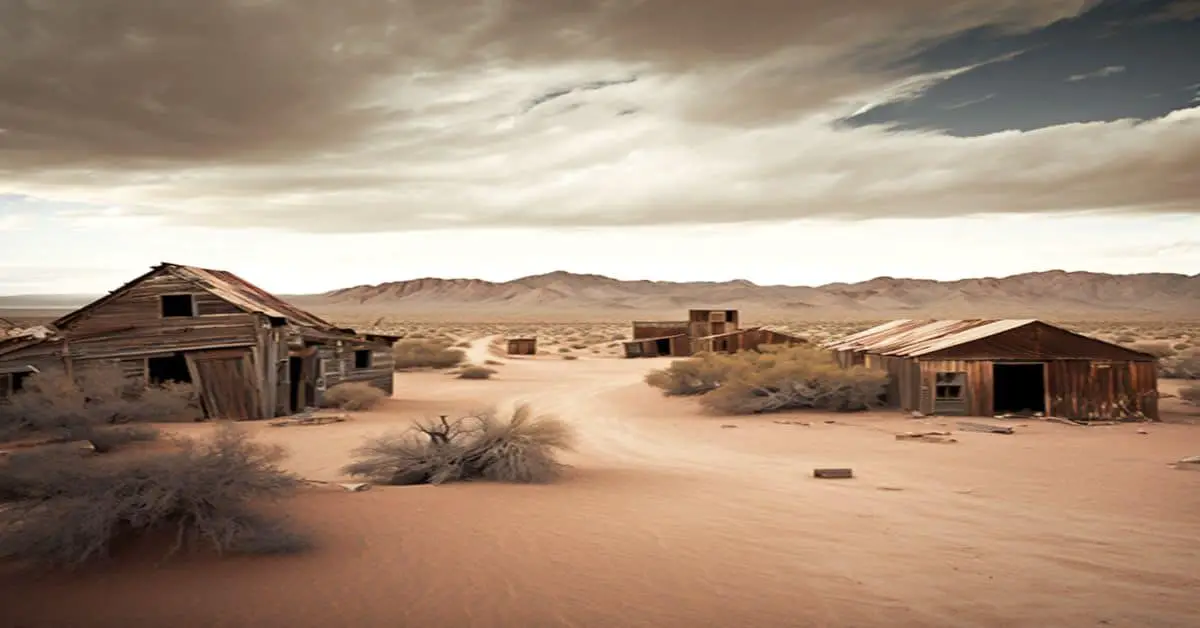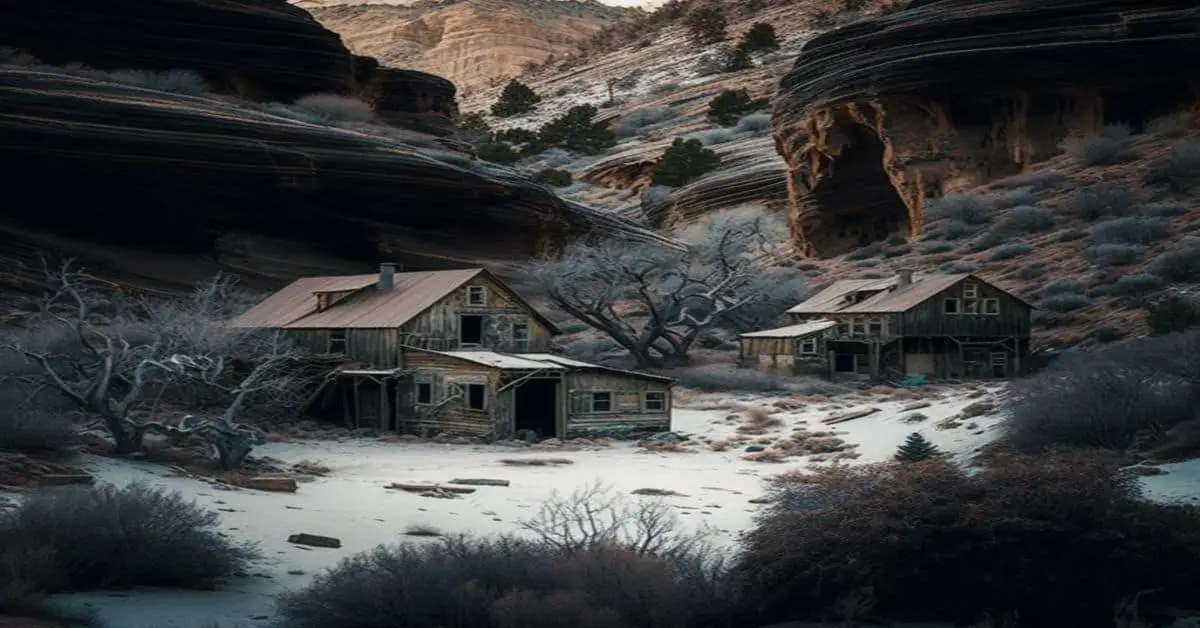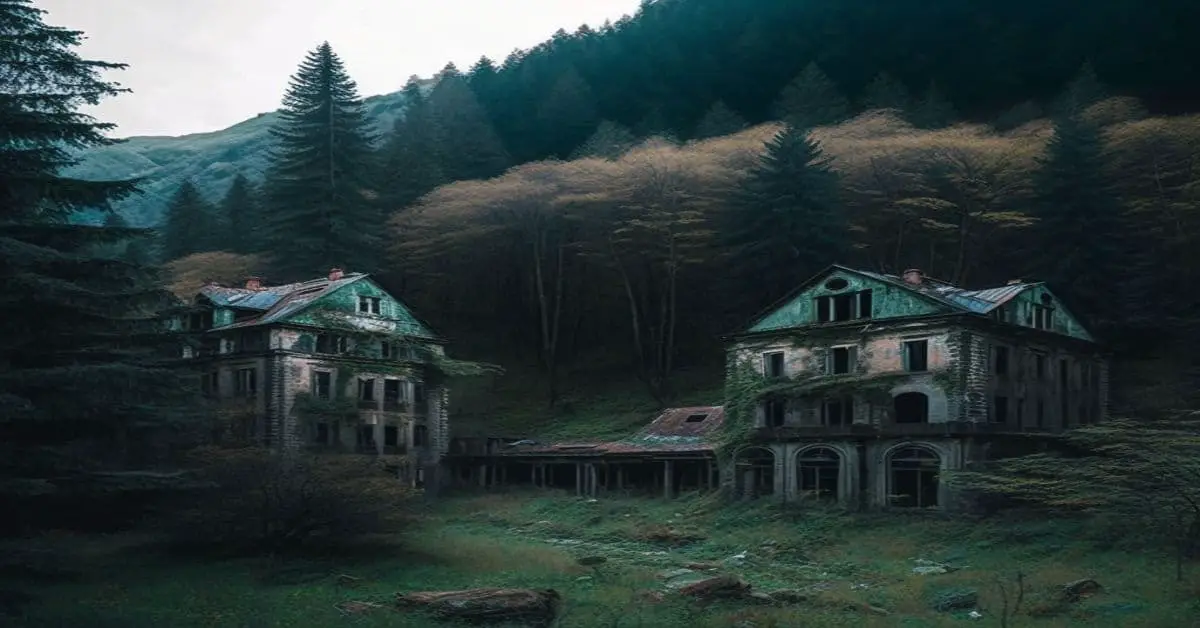San Andreas, California, may be a forgotten ghost town today, but it has a rich and fascinating history that dates back to the Gold Rush era.
Founded in 1849 by Mexican miners who discovered gold in the area, San Andreas saw a rise in American miners and later Chinese immigrants who worked to rework the tailings left behind.
As a result, the town became a hub for mining activity, attracting prospectors from all over the world in search of fortune.
Despite its decline, San Andreas still holds a significant place in California’s history, particularly in the context of the Gold Rush and the infamous outlaws and bandits that roamed the area.
Black Bart and Joaquin Murieta are notorious figures who left their mark on San Andreas.
Today, visitors can explore the town’s remnants, including a museum, a courthouse, and a historic cemetery, and discover California’s forgotten past through the lens of San Andreas.
Key Takeaways
- San Andreas was founded in 1849 by Mexican miners who discovered gold in the area and had a rich history of gold mining dating back to 1864.
- The town suffered from racial clashes and was where the infamous Gentleman Bandit, Black Bart, was tried and sentenced to 6 years at San Quentin for a series of stagecoach robberies.
- San Andreas has many old buildings and relics, including the dressed-stone Fricot building, a two-story I.O.O.F. Hall, and the courthouse, now home to the Chamber of Commerce and a museum with a good collection of local historical items.
- The historic Pioneer Cemetery, dating back at least to 1851, is located just west of town and has graves moved from Lancha Plana, Camanche, and Poverty Bar when Camanche Lake inundated those towns.
Gold Mining History
The history of gold mining in San Andreas dates back to 1864, and the area saw a significant influx of Chinese miners after American miners crowded out the Mexican miners in 1850.
The discovery of gold profoundly impacted the demographics of the mining community in San Andreas.
As the gold rush attracted people from all over the world, the population of San Andreas grew rapidly, leading to a diverse community of miners from different ethnic backgrounds.
With the influx of Chinese miners, San Andreas became one of the largest Chinese communities in the region, and Chinese culture and traditions continue to play a significant role in the town’s history.
Mining techniques used in San Andreas during the gold rush era were primitive, and the environmental impact of mining was severe.
Hydraulic mining, which involved blasting water at high pressure to wash away hillsides, caused significant damage to the environment.
The resulting debris and soil erosion led to flooding and soil degradation, which impacted the local flora and fauna.
The use of mercury to extract gold also had serious environmental consequences, as it contaminated water sources and caused health problems for humans and animals.
Despite the negative impact of gold mining on the environment, its legacy continues to be felt in San Andreas, and the town remains an important destination for those interested in California’s gold rush history.
Famous Outlaws and Bandits
Famous outlaws and bandits such as Black Bart and Joaquin Murieta have left their mark on the history of San Andreas. The town was a hotbed of criminal activity during the gold rush era, and many of the most infamous criminals of the time found their way to San Andreas.
- Infamous criminal trials: San Andreas was the site of several high-profile criminal trials, including that of Black Bart. Charles E. Boles, better known as Black Bart, was a notorious stagecoach robber who operated throughout California in the late 1800s. He was eventually caught and brought to trial in San Andreas, where he was sentenced to six years in San Quentin.
Other famous trials that took place in San Andreas include those of Joaquin Murieta and his gang, who were known for their brutal attacks on American settlers throughout California.
- Notorious gang activity: San Andreas was also home to several notorious gangs during the gold rush era. Joaquin Murieta and his band of cutthroats were just one of many criminal organizations that operated in the area. These gangs were known for violent attacks on miners, settlers, and other travelers passing through the area.
Despite the efforts of law enforcement officials, many of these gangs could operate with relative impunity, thanks to the remote and rugged terrain of the Sierra Nevada foothills.
Today, San Andreas is a much quieter, but the town’s history as a haven for outlaws and bandits is still remembered and celebrated by locals and visitors alike.
Historical Landmarks
One notable aspect of the town’s history is its collection of well-preserved historical landmarks. Despite the modernization of San Andreas, several buildings have been maintained to showcase the town’s rich past.
The dressed-stone Fricot building, a two-story I.O.O.F. Hall, and the courthouse are the most prominent examples of early architecture. The courthouse, in particular, is a standout feature as it now houses the Chamber of Commerce and a museum with an impressive collection of local historical items. Behind the courthouse is the old jail, where Black Bart was incarcerated. The jail cell is still marked with his name, a testament to the town’s enduring connection to infamous outlaws.
In addition to these buildings, San Andreas also boasts a historic Pioneer Cemetery dating back to at least 1851. Though many of the graves are unmarked, a few headstones offer intriguing inscriptions that glimpse the past.
The town’s local museum is another must-see attraction, with exhibits that showcase San Andreas’s gold-mining roots and the challenges faced by early settlers. These landmarks and exhibits testify to the town’s commitment to preserving its past for future generations to enjoy and learn.
Frequently Asked Questions
What is the current population of San Andreas?
San Andreas, California is considered a ghost town with a rich history of gold mining and infamous bandits. However, no current population data is available to discuss population growth or demographic diversity.
What is the economic situation of San Andreas today?
The economic situation of San Andreas today is not discussed without context. However, the town has potential for tourism due to its cultural heritage preservation, including historic buildings, a museum, and a cemetery.
What is the climate like in San Andreas?
The climate in San Andreas, California is classified as Mediterranean, characterized by hot, dry summers and mild, wet winters. Visitors can explore the surrounding nature and wildlife, with potential sightings of deer, mountain lions, and coyotes.
What is the current state of the mining industry in San Andreas?
There is no current mining industry in San Andreas. The town’s historical gold mining operations have ceased due to modern demands and depleted resources. However, job opportunities in mining technology may arise in nearby areas.
What are some popular recreational activities in San Andreas?
Popular recreational activities in San Andreas include hiking trails in the nearby hills and enjoying the local cuisine. While the town has lost much of its mining camp character, visitors can still explore historic buildings and the Pioneer Cemetery.


